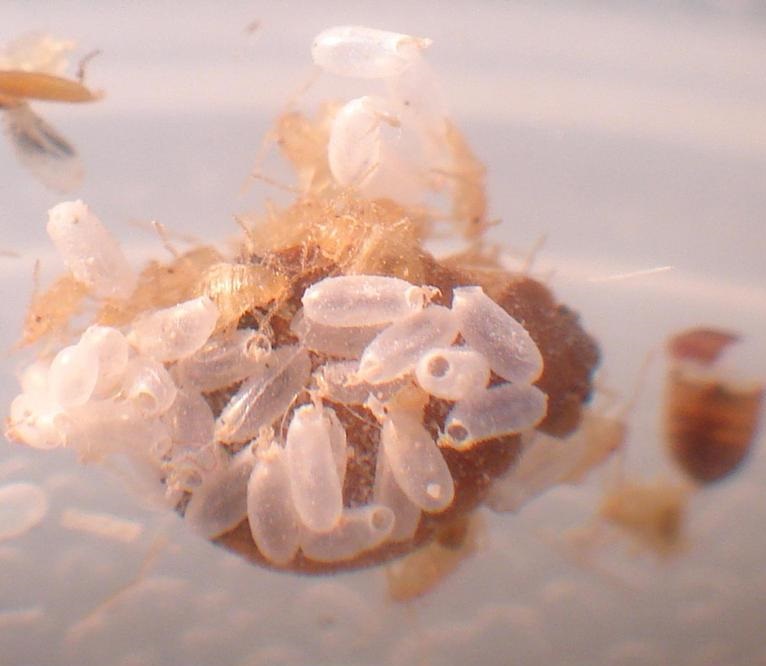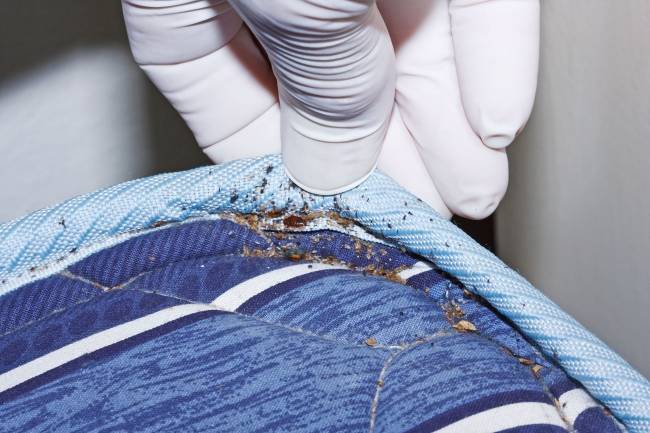Many people think that bed bugs can only thrive in beds — well, the word ‘bed’ in their name after all. But this is a common misconception. Bed bugs can thrive in different parts of your home, including your carpeting. Here is our complete guide to bed bugs in carpets.
Why do you have bed bugs in your carpets?
- You have a bed bug infestation somewhere else in your home. You can have bed bugs in your carpets if you have an active bed bug infestation at home. Sure, bed bugs can primarily thrive on your mattress and bed frame because they are near their food source — you. But this doesn’t mean that they are going to stay there forever. They can expand their territory, infesting your carpets, walls, and furniture, especially those that are near your mattress and bed frame.
- Bed bugs are hiding in your carpets until you fall asleep. Bed bugs feed every 3-7 days. This means that the majority of the bed bug population in your home is in a digesting state and not actively looking to feed. This also means that they don’t have to be near you all the time. Bed bugs like to hide in places where you can’t see them immediately, like in cracks, corners, and crevices in your mattress and bed frame. But they can get into carpets too, especially the parts touching the corners and edges of your walls.
- Don’t confuse bed bugs with other carpet pests. Carpets are great places for pests to thrive. They are on the floor, so they are especially accessible to small and crawling pests like bed bugs and fleas. It’s important to know what kind of pest you have on your carpets because different pests require different pest control methods. In a bed bug infestation, you can find bed bug carcasses, feces, and white bed bug eggs on cracks, corners, and crevices around your home. And in a flea infestation, you can find live fleas on your pets and their belongings.

How to get rid of the bed bugs in your carpets
- Use a vacuum cleaner. Vacuum cleaners can effectively help get rid of bed bugs in carpets, but they will not completely get rid of infestations. The advantage with them is that they are straightforward and accessible devices, and the disadvantage with them is that they may miss bed bug hiding spots that are too deep from the surface. When using a vacuum cleaner, use the highest suction setting possible. And when vacuuming corners, make sure to use a small nozzle that can effectively suck on the smallest of spaces. Throw away the contents of the vacuum cleaner in a garbage can far away from your home to prevent the bed bugs from coming back.
- Try heat treatments. Heat treatments are more effective than vacuum cleaners because you actually kill the pests instead of just vacuuming them up and throwing them outside. Bed bugs are formidable creatures, but they are very vulnerable when exposed to extreme heat. They die when exposed to at least 120 degrees Fahrenheit. The problem with heat treatments is that they are not as accessible as vacuum cleaners. They require special equipment from steam cleaning companies and pest control professionals.
- Call pest control professionals. Bed bugs are resilient pests. Most of the time, DIY approaches like vacuum cleaning are not enough to completely get rid of infestations. They can only help in reducing bed bug populations and reproduction rates. Even the most competent pest control professionals may take weeks to completely get rid of infestations, so amateurs like yourself are not likely to be successful with just DIY approaches.
Prevention is better than cure…
- Get rid of the bed bug infestation. The best way to prevent having bed bugs in your carpets is to not have bed bugs at home in the first place. If you think you are suffering from a bed bug infestation, get professional help as soon as you can. To confirm that you really have an infestation, look for these signs — live bed bugs, carcasses, eggs, feces, stains, and musky odors. Bed bugs are not just disgusting creatures. They can also be health risks because of their bites. You have every incentive in the world to get rid of them.
- Be careful of hitchhiking bed bugs. Many of the places you frequent can have bed bugs in them. If you go to your child’s college dorm, you can take bed bugs home with you. If you often stay in the pantry of your office, you can also get bed bugs and bring them home. Even hotels, which are supposed to be the bastions of cleanliness, can have bed bugs in them. To avoid hitchhiking bed bugs, look for the signs of bed bug infestations before settling in these places.
- Inspect furniture before introducing them to your home. Furniture, whether they are upholstered or just completely bare and wooden, can house bed bugs. This is because they have cracks, corners, crevices, and holes where bed bugs can squeeze through and hide. Bed bugs are only the size of apple seeds or about 5-7 millimeters. It shouldn’t surprise you that they can hide in the smallest of gaps. Secondhand furniture is particularly notorious for bringing bed bugs into new homes, so inspect them heavily before even buying them.

Bed bugs can thrive in different parts of your home
Don’t let the name “bed bugs” confuse you. These bloodsucking pests can thrive beyond your mattress and bed frame. They can live in your furniture, walls, and of course, carpets. Thankfully, there are a lot of ways to get rid of bed bugs in carpets, such as vacuum cleaning and steam cleaning. But take note that these methods may not be able to eliminate the entire infestation.
Bed bugs are complicated pests. It’s better to call pest control professionals to get rid of them instead of trying to DIY your way out of your pest problem. If you delay treatment, your problem can get worse, and it puts you at an increased risk of health hazards like bed bug bites.

